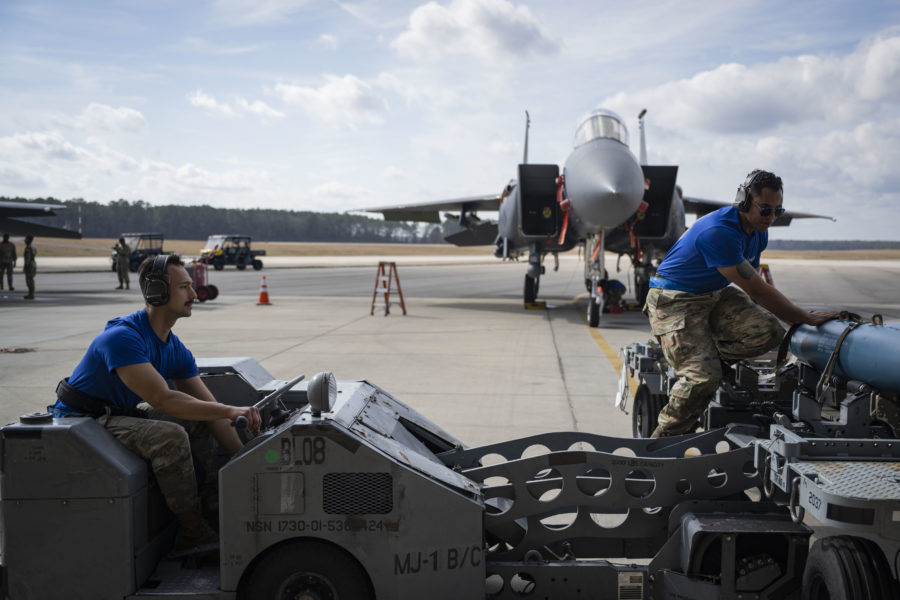The Biden administration is requesting $185.1 billion for the Air Force in 2024, slightly less than its $185.5 billion proposal for the Army, and well behind the $202.5 billion requested for the Navy.
But the Air Force, Space Force, and Navy are gaining investment while Army and Marine Corps spending would remain essentially flat—if the Pentagon gets its way.
The Space Force, the smallest service, would receive the smallest total at $30 billion, but the biggest increase at 15 percent. The Marine Corps would receive $53.2 billion.
After two decades of wars in the Middle East, the Department of Defense has shifted its focus largely toward the Pacific and China. And instead of large armor purchases, its growing investments are for long-range precision weapons.
“The focus here is making our military more capable, not making it larger,” DOD comptroller Michael J. McCord told reporters at the Pentagon.
2024 Budgets by Service
| Service | Funding in Billions |
|---|---|
| Navy | $202.5 |
| Army | $185.5 |
| Air Force | $185.1 |
| Marine Corps | $53.2 |
| Space Force | $30.0 |
Air Force leaders continue to press to retire old platforms now in order to buy new newer systems and weapons. Munitions make up a major portion of investment for all the services: The Pentagon’s planned budget for missiles and munitions is $30.6 billion, more than its ask for the entire Space Force budget.
The Defense Department’s shift to the Pacific is perhaps most evident in the Army’s budget. Two years ago, the Army budget stood at $180 billion, compared to the Department of the Air Force at $221.4 billion and the Department of the Navy at $221.2 billion. For 2024, the Army is requesting $185.3 billion while the Department of the Air Force and the Department of the Navy are seeking $259 billion and $256 billion respectively, or more than $30 billion in growth over two years for each.
The Department of the Air Force figure is inflated, however, by $44.2 billion in pass-through spending that is destined not for the Air Force or Space Force but for other agencies. In reality, the Air Force and Space Force share just $215.1 billion of the $259.3 billion DAF budget, and Air Force funds would actually be less than those invested in the Army.
The Air Force budget has lagged behind the Army and Navy for the last 31 years.
“Our greatest measure of success, and the one we use around here most often, is to make sure the [Chinese] leadership wakes up every day, considers the risks of aggression and concludes that today is not the day,” deputy secretary of defense Kathleen Hicks told reporters.
